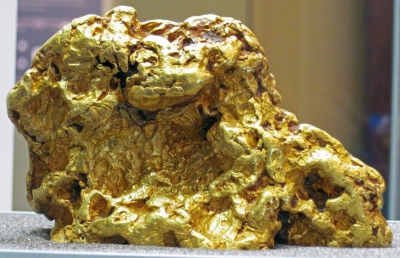Darius I (Old Persian: Drayavau; Greek: Dareios; c.550 486 BCE), commonly known as Darius the Great, was a Persian ruler who served as the third King of Kings of the Achaemenid Empire, reigning from 522 BCE until his death in 486 BCE. He ruled the empire at its territorial peak, when it included much of Western Asia, parts of the Balkans (ThraceMacedonia and Paeonia) and the Caucasus, most of the Black Sea's coastal regions, Central Asia, the Indus Valley in the far east, and portions of North Africa and Northeast Africa including Egypt (Mudrya), eastern Libya, and coastal Sudan.Darius ascended the throne by overthrowing the legitimate Achaemenid monarch Bardiya, whom he later fabricated to be an imposter named Gaumata. The new king met with rebellions throughout his kingdom and quelled them each time; a major event in Darius' life was his expedition to subjugate Greece and punish Athens and Eretria for their participation in the Ionian Revolt. Although his campaign ultimately resulted in failure at the Battle of Marathon, he succeeded in the re-subjugation of Thrace and expanded the Achaemenid Empire through his conquests of Macedon, the Cyclades and the island of Naxos as well as the sacked Greek city of Eretria.
Darius organized the empire by dividing it into administrative provinces that were governed by satraps. He organized Achaemenid coinage as a new uniform monetary system, and made Aramaic a co-official language of the empire alongside Persian. He also put the empire in better standing by building roads and introducing standard weighing and measuring systems. Through these changes, the Achaemenid Empire became centralized and unified. Darius worked on other construction projects throughout the empire, primarily focusing on Susa, Pasargadae, Persepolis, Babylon and Egypt. He had the cliff-face Behistun Inscription carved at Mount Behistun to record his conquests, which would later become an important testimony of the Old Persian language.
Darius is mentioned in the books of Haggai, Zechariah and EzraNehemiah of the Hebrew Bible.
Gold is a chemical element with the symbol Au (from Latin: aurum) and atomic number 79, making it one of the higher atomic number elements that occur naturally. It is a bright, slightly orange-yellow, dense, soft, malleable, and ductile metal in a pure form. Chemically, gold is a transition metal and a group 11 element. It is one of the least reactive chemical elements and is solid under standard conditions. Gold often occurs in free elemental (native) form, as nuggets or grains, in rocks, veins, and alluvial deposits. It occurs in a solid solution series with the native element silver (as electrum), naturally alloyed with other metals like copper and palladium, and mineral inclusions such as within pyrite. Less commonly, it occurs in minerals as gold compounds, often with tellurium (gold tellurides).
Gold is resistant to most acids, though it does dissolve in aqua regia (a mixture of nitric acid and hydrochloric acid), forming a soluble tetrachloroaurate anion. Gold is insoluble in nitric acid, which dissolves silver and base metals, a property long used to refine gold and confirm the presence of gold in metallic substances, giving rise to the term acid test. Gold also dissolves in alkaline solutions of cyanide, which are used in mining and electroplating. Gold dissolves in mercury, forming amalgam alloys, and as the gold acts simply as a solute, this is not a chemical reaction.
A relatively rare element, gold is a precious metal that has been used for coinage, jewelry, and other arts throughout recorded history. In the past, a gold standard was often implemented as a monetary policy. Still, gold coins ceased to be minted as a circulating currency in the 1930s, and the world gold standard was abandoned for a fiat currency system after 1971.
As of 2017, the world's largest gold producer by far was China, with 440 tonnes per year. A total of around 201,296 tonnes of gold exists above ground, as of 2020. This is equal to a cube with each side measuring roughly 21.7 meters (71 ft). The world consumption of new gold produced is about 50% in jewelry, 40% in investments and 10% in industry. Gold's high malleability, ductility, resistance to corrosion and most other chemical reactions, and conductivity of electricity have led to its continued use in corrosion-resistant electrical connectors in all types of computerized devices (its chief industrial use). Gold is also used in infrared shielding, colored-glass production, gold leafing, and tooth restoration. Certain gold salts are still used as anti-inflammatories in medicine.

1938Jul, 31
Archaeologists discover engraved gold and silver plates from King Darius the Great in Persepolis.
Choose Another Date
Events on 1938
- 18Feb
Nanking Massacre
Second Sino-Japanese War: During the Nanking Massacre the Nanking Safety Zone International Committee is renamed "Nanking International Rescue Committee" and the safety zone in place for refugees falls apart. - 12Mar
Austria
Anschluss: German troops occupy and absorb Austria. - 23Sep
Munich Agreement
Mobilization of the Czechoslovak army in response to the Munich Agreement. - 30Sep
Munich Agreement
Britain, France, Germany and Italy sign the Munich Agreement, allowing Germany to occupy the Sudetenland region of Czechoslovakia. - 30Oct
The War of the Worlds (radio drama)
Orson Welles broadcasts his radio play of H. G. Wells's The War of the Worlds, causing anxiety in some of the audience in the United States.

 English
English  español
español  français
français  português
português  русский
русский  العربية
العربية  简体中文
简体中文 